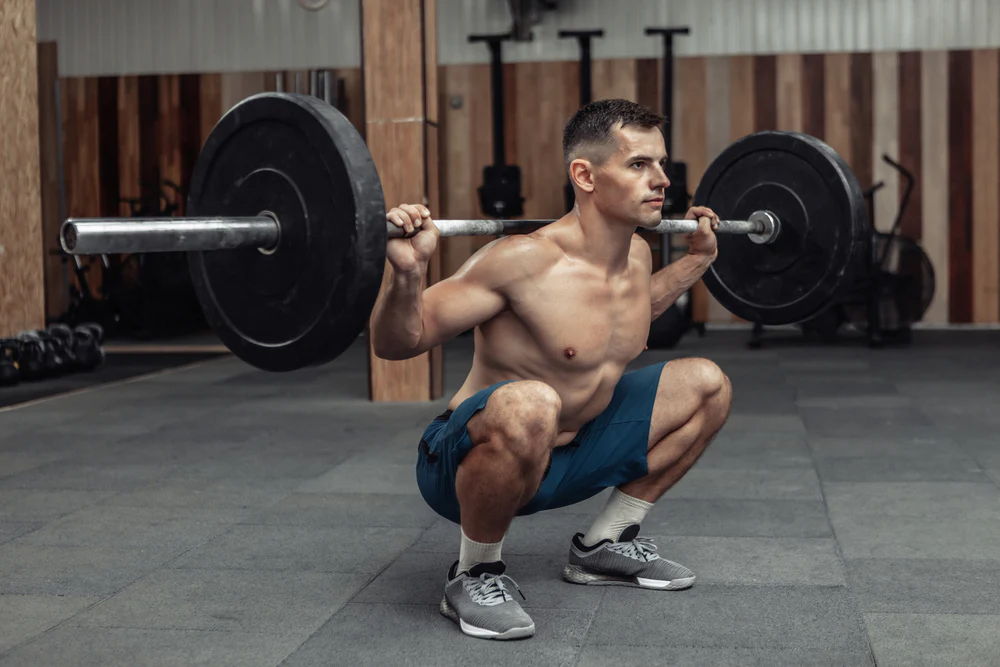
Achieving Fitness After 40: The 5 Standards to a Healthier Life
If you are over 40, there is a good chance you believe you will not be able to achieve your fitness goals. Well, think again. In a world where Derek, 45, and Keegan, both in their forties, are setting new fitness standards, it is time to rethink what is possible. In this video, they are joined by their enthusiastic coach, Ben, to discuss five key fitness standards and show how, with dedication and the right mindset, you can achieve remarkable results regardless of your age.
Standard 1: Wrist Below Toes
The ability to place your wrist below your toes is a fundamental fitness standard. This is a key indicator of flexibility and mobility, and the team believes that 99% of people over 40 can achieve it with consistent effort. The first step, especially if you are over 40, is to rest your hands on something so you do not strain your back. You can gradually straighten one leg at a time until you can comfortably place your palms flat on the floor. This standard can be measured by seeing if you can do it with your quads flexed, ensuring a safe range of motion.
Standard 2: L-Sit
The L-sit is a powerful exercise that targets your upper body and core. It involves lifting your legs while keeping your upper body suspended on parallel bars. For most people, starting with one leg at a time and then progressing to both legs is the way to go. This exercise challenges the muscles responsible for lifting your legs, and it’s a crucial component of overall fitness, especially for those over 40. Developing strength in these muscles can help prevent age-related issues like loss of sprinting ability.
Standard 3: Hamstring Over Calf Flexibility
Hamstring flexibility is vital for overall mobility. If you can lift your heel comfortably above your calf without your back knee touching the floor, you’re on the right track. This is a challenging standard, as it demands a high level of flexibility in the back leg. Achieving this can be compared to working towards a front split. While front splits may not be everyone’s goal, this standard helps you maintain a wide range of motion and ensures that your body remains agile.
Standard 4: Full Range of Motion Pull-Ups
Pull-ups are a classic exercise, and being able to perform ten full-range-of-motion pull-ups is a good benchmark to aim for. Derek shows proper form by completing each rep with a full extension at the bottom and a full contraction at the top. It is critical to address any weaknesses in your pull-up game, especially at the top of the movement. While it may take some time to strengthen this part, it is a necessary step towards mastering the exercise and improving your upper-body strength.
Standard 5: Face Pulls for Postural Strength
The final standard involves using a cable machine for face pulls, which targets the muscles that help maintain good posture. It’s a way to develop upper back and shoulder strength and work on your overall posture. This exercise can be particularly challenging for people over 40, as it demands a level of strength that can decrease with age. Achieving these standards can be a powerful tool for ensuring that your body stays strong, mobile, and injury-free as you age.
The Power of Consistency
The key message here is that with a little consistency, you can reach these fitness standards. They aren’t just for athletes; they’re for everyone who values their health. It’s not about spending hours in the gym; even 10 minutes a day can lead to remarkable results. The standards act as a foundation for a healthier lifestyle, offering a concrete way to track your progress and make long-lasting changes to your physical and mental well-being.
The Influence of Community
A vital element in reaching these standards is the community. Surrounding yourself with people who share your values can make the journey more enjoyable and inspirational. These standards are not just about individual success; they are also about leading by example and inspiring those around you.
When you’re work towards your fitness goals, you’re not only improving your own life but potentially inspiring others to embark on a similar path to better health.When it comes to fitness, age is merely a number. Regardless of your age, the five standards discussed in this video provide a clear and attainable path to a healthier, more active lifestyle. These standards, when combined with the power of consistency and the support of a community, can serve as a foundation for lifelong health and well-being. why not set an example, take charge of your fitness, and prove that age is no barrier to achieving a healthier, happier you?
